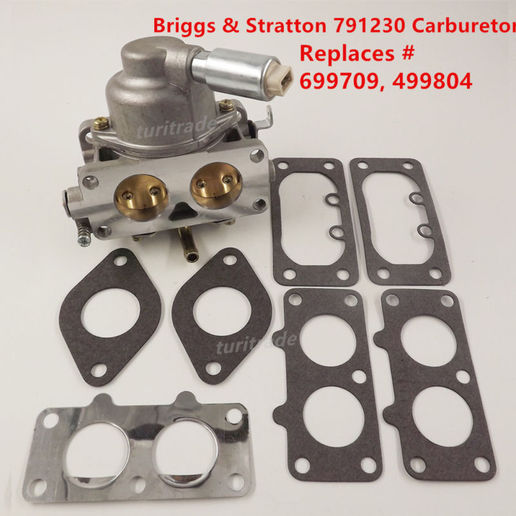Texasmark1
Well-known Member
BS V twin, 52" ZT, kept garaged, 500 hrs, reg. maint, syn oil, new plugs actually did it twice, checked fire on both cylinders with an inline neon lamp adapter designed for the purpose both at WOT and idle, re gapped magnetos to flywheel, checked tappet clearance (in spec). Air cleaner off or on. Blade engagement, even at idle does not lug engine, takes it in stride. Runs up in the 3500 area with blade engaged, no grass, a little slow on the up take, about as fast as a long stroke diesel 0 to max. Compression hits about 150 on the 4th stroke on one and about 135 on the other. Manual says within 25% ok. Rotated the valves (with a pair of pliers off the seat) on the weaker one. Didn't retest compression but miss is still present.
Runs right at 3600 (spec) at WOT, after snake oil treatments in fresh fuel and in crankcase, clean oil, hasn't run that good even when new (wasn't broken in)....usually 3300+. Idles at about 1650, (spec is 1750). For a long time it would increase idle as a function of temp. After mowing, idle would be up around 2200. Not doing that now.
Once you come off WOT (a small amount of the throttle reduction) it starts missing intermittently, but consistently intermittent. Once I get to idle it settles down but sounds like it's running on one lung even though I checked with the neon bulb and both firing evenly.....course that doesn't say that the cylinder is producing hp.
It seems to run smoother when first started which led me to think a coil or valve adjustment too tight but neither of those have proven to be a problem.
Can't say it's fuel supply or I'd have problems at WOT.
I thought I knew a few things about engines. This one has me stumped and I don't want to rip it apart just to find I'm chasing a ghost.
I originally thought the vacuum/pressure hose from the valve cover to the fuel pump was the problem due to numerous cracks, but with my new one, problem remains.
Help would be appreciated and thanks in advance.
Mark
Runs right at 3600 (spec) at WOT, after snake oil treatments in fresh fuel and in crankcase, clean oil, hasn't run that good even when new (wasn't broken in)....usually 3300+. Idles at about 1650, (spec is 1750). For a long time it would increase idle as a function of temp. After mowing, idle would be up around 2200. Not doing that now.
Once you come off WOT (a small amount of the throttle reduction) it starts missing intermittently, but consistently intermittent. Once I get to idle it settles down but sounds like it's running on one lung even though I checked with the neon bulb and both firing evenly.....course that doesn't say that the cylinder is producing hp.
It seems to run smoother when first started which led me to think a coil or valve adjustment too tight but neither of those have proven to be a problem.
Can't say it's fuel supply or I'd have problems at WOT.
I thought I knew a few things about engines. This one has me stumped and I don't want to rip it apart just to find I'm chasing a ghost.
I originally thought the vacuum/pressure hose from the valve cover to the fuel pump was the problem due to numerous cracks, but with my new one, problem remains.
Help would be appreciated and thanks in advance.
Mark


